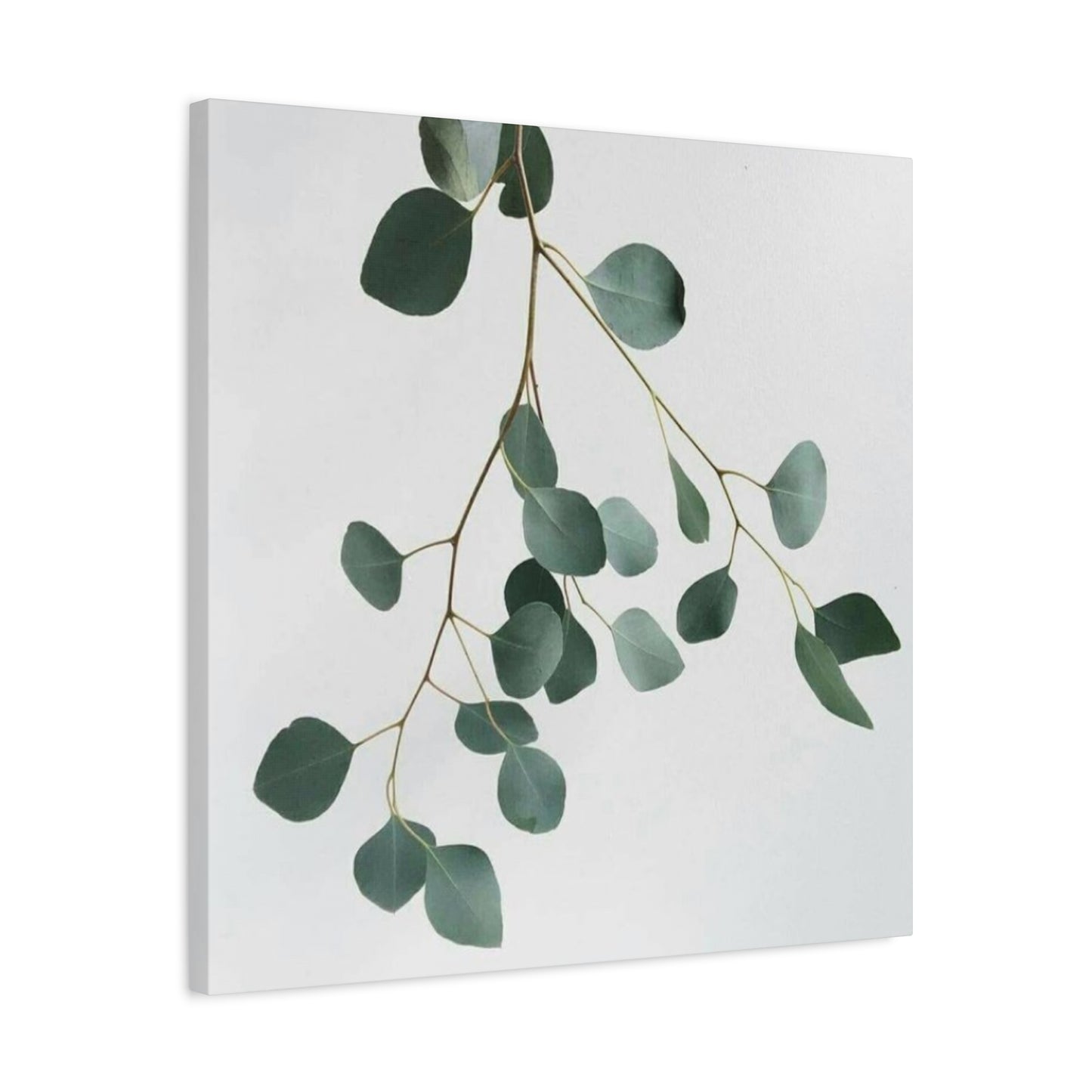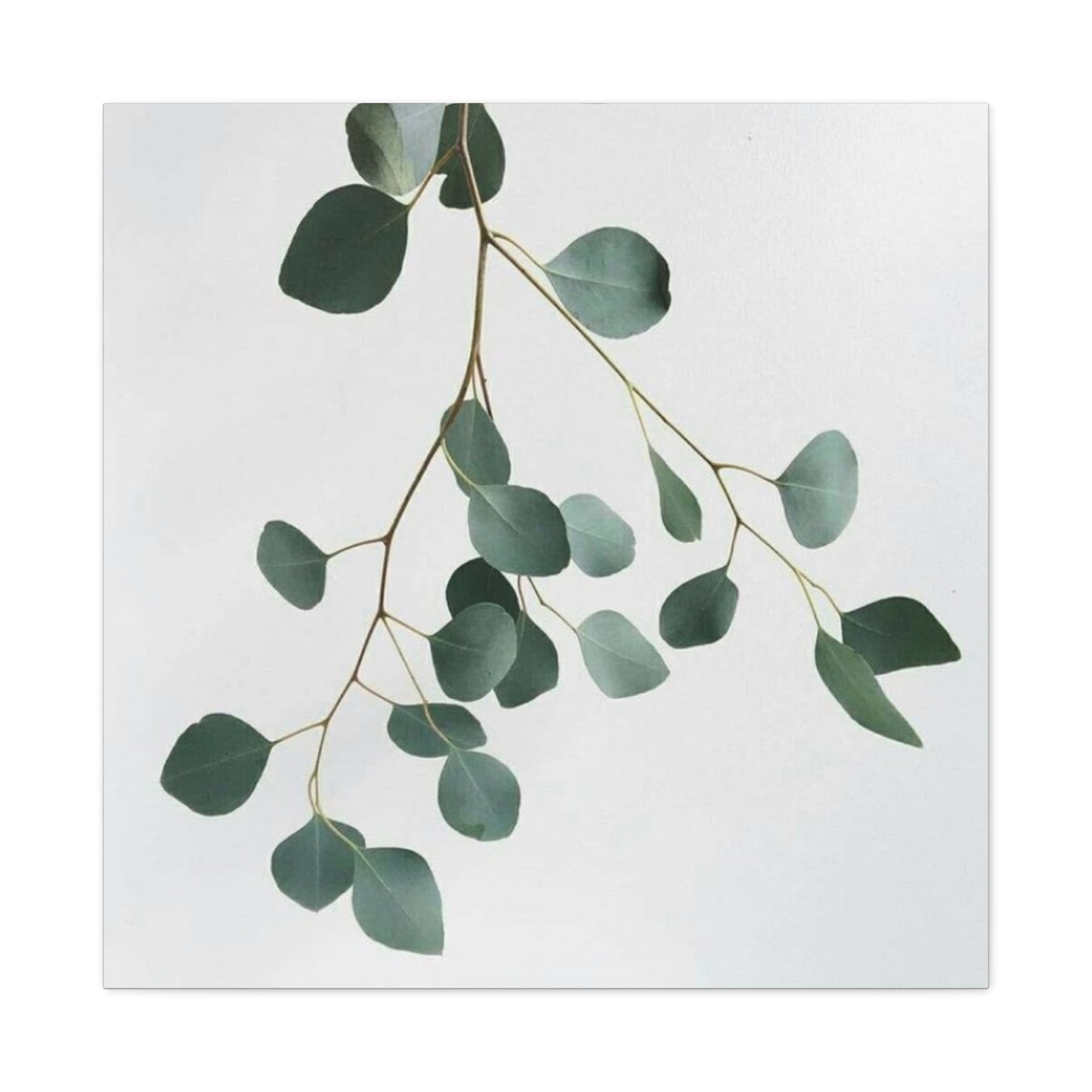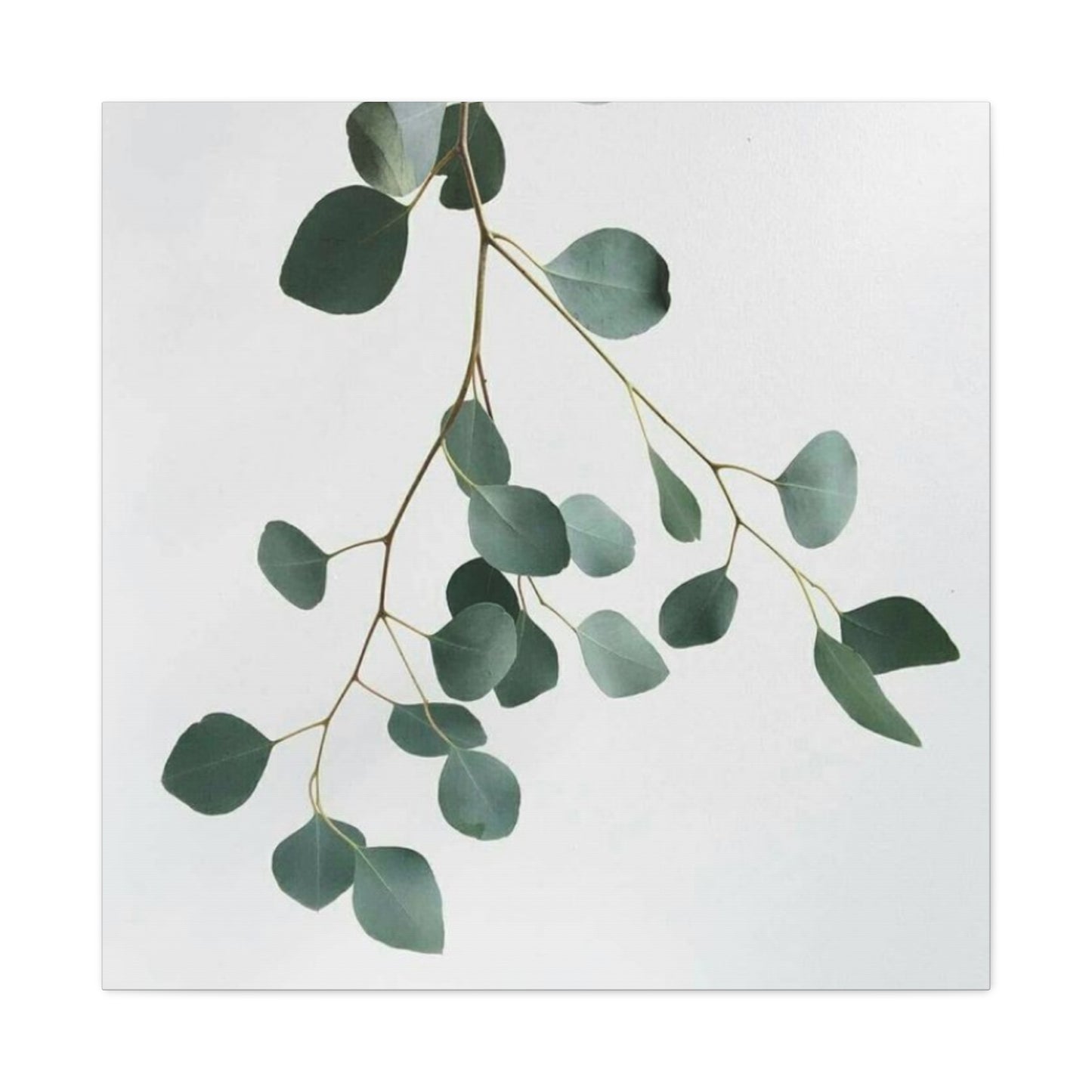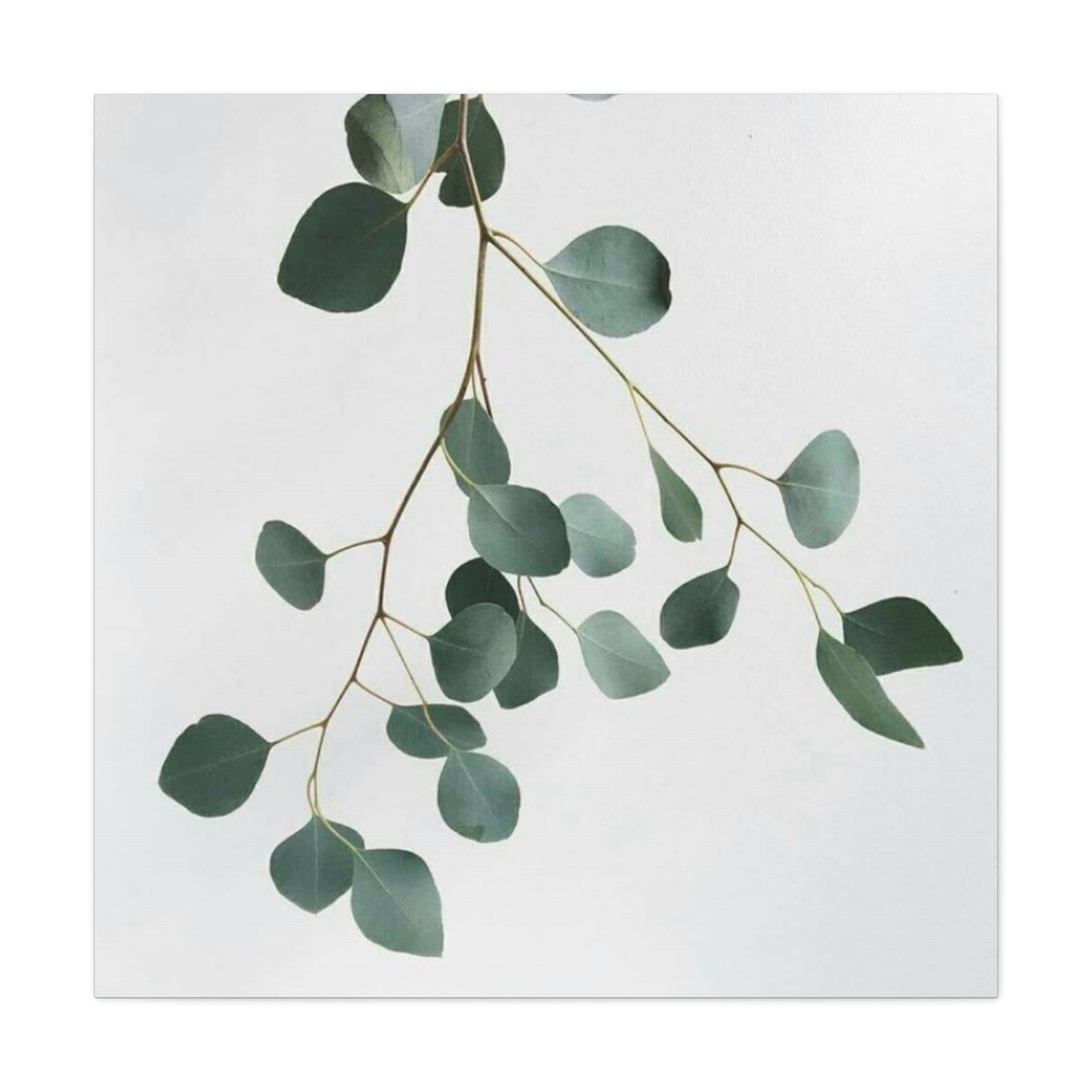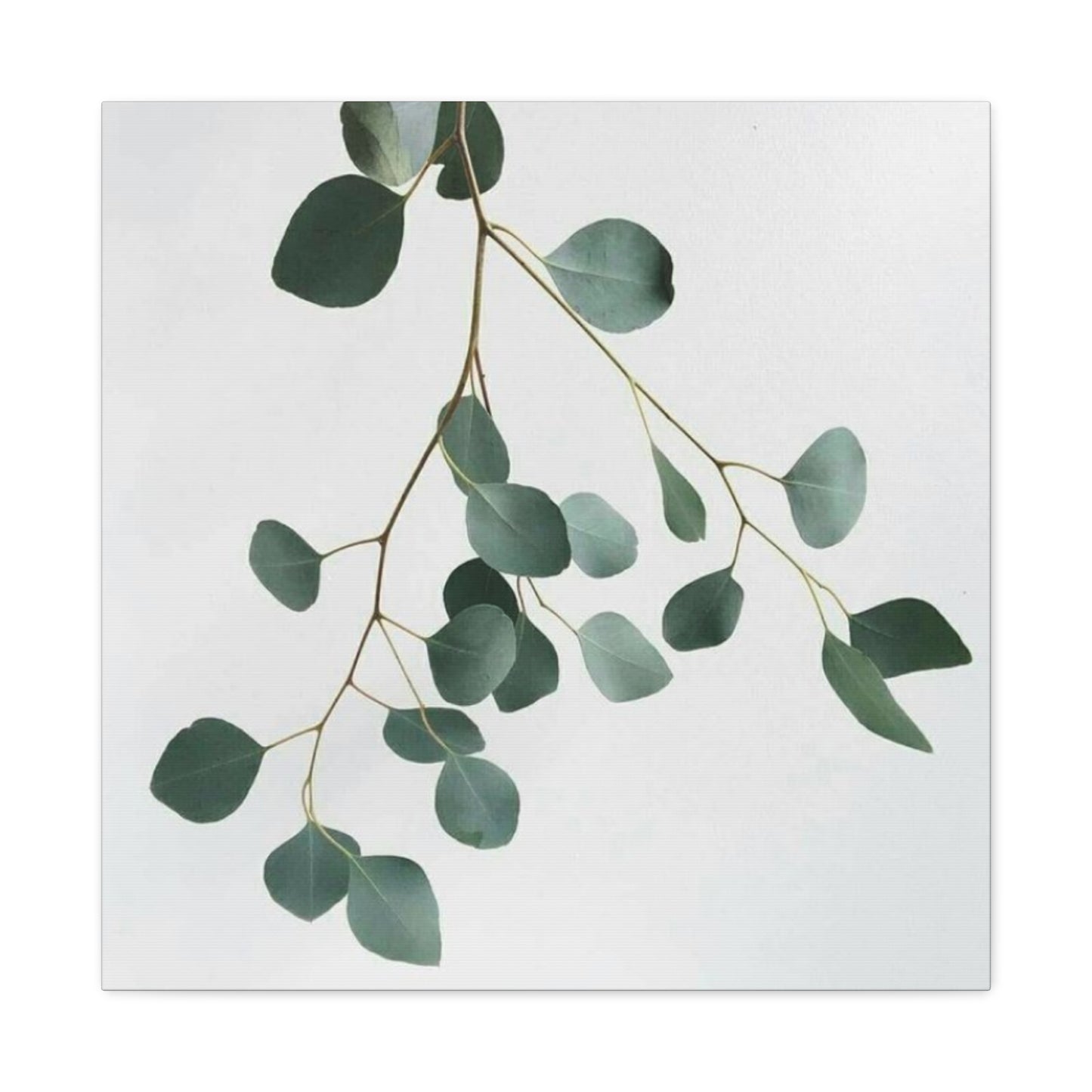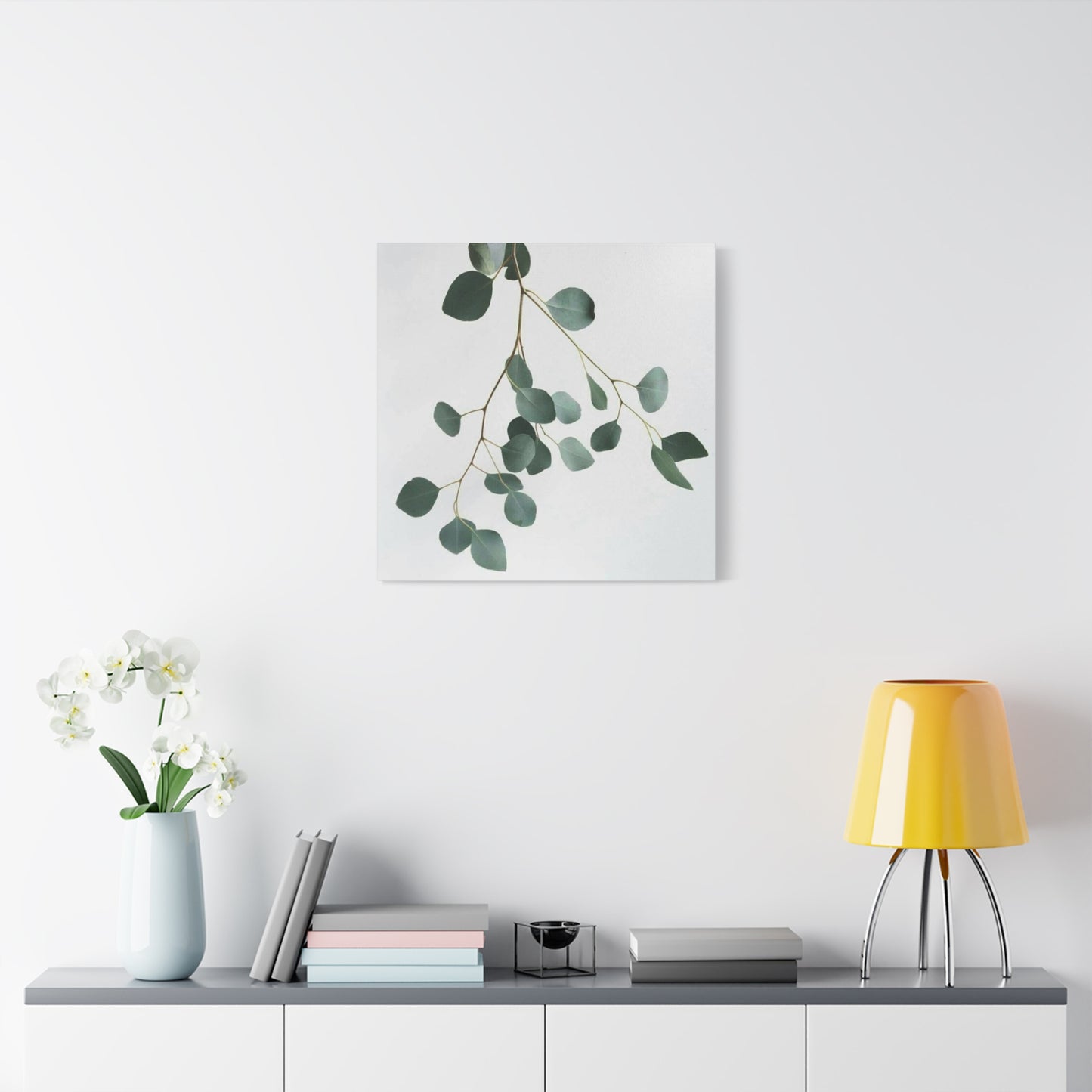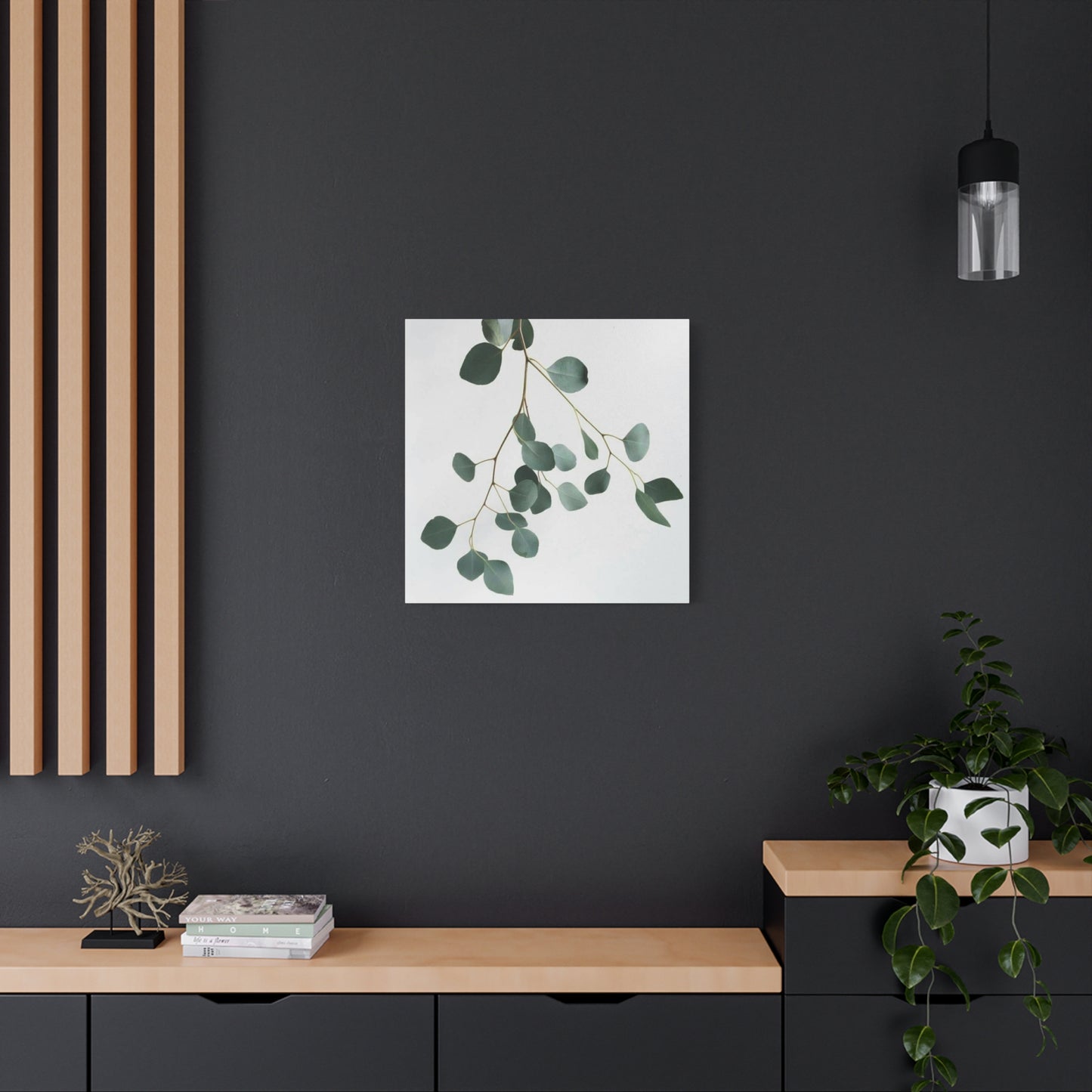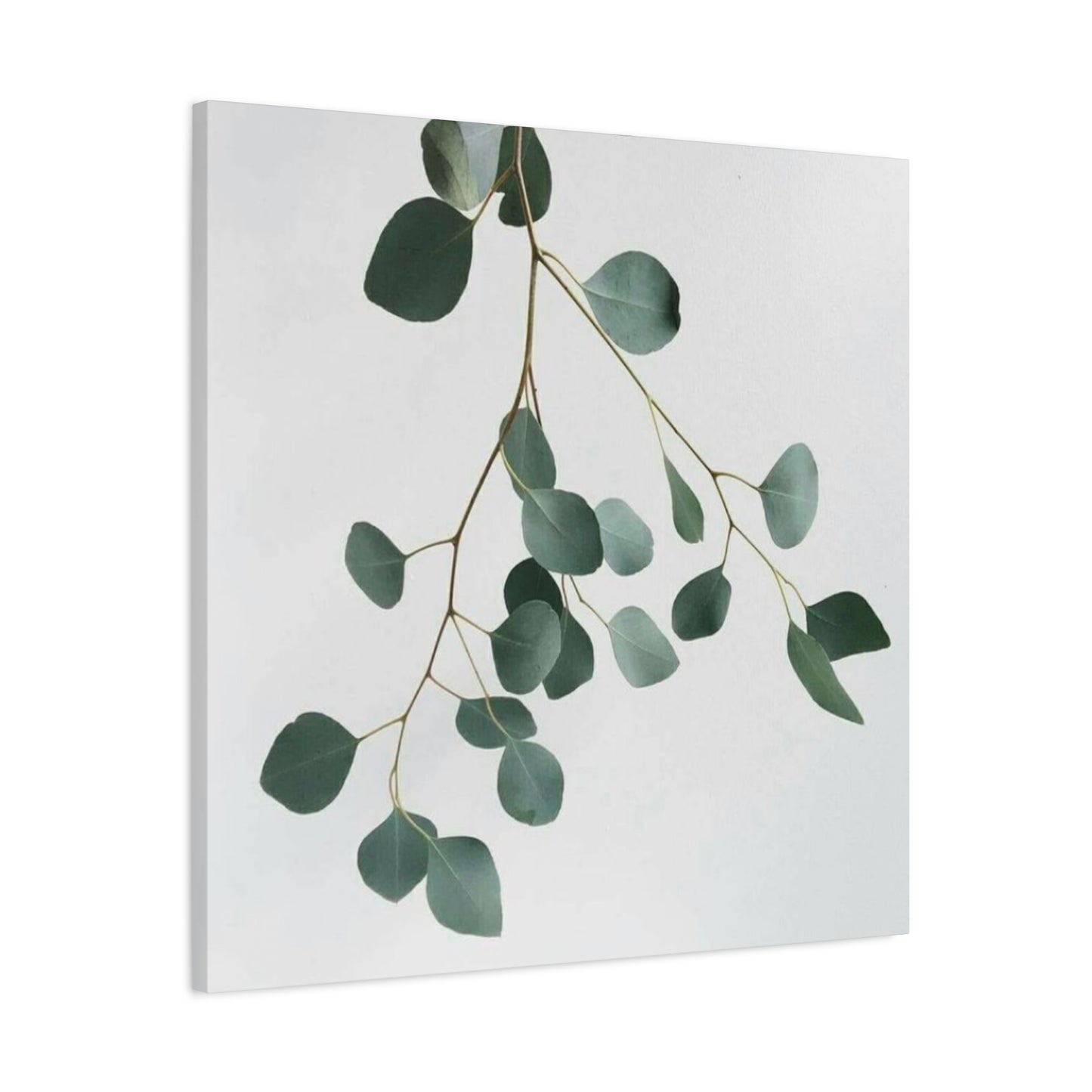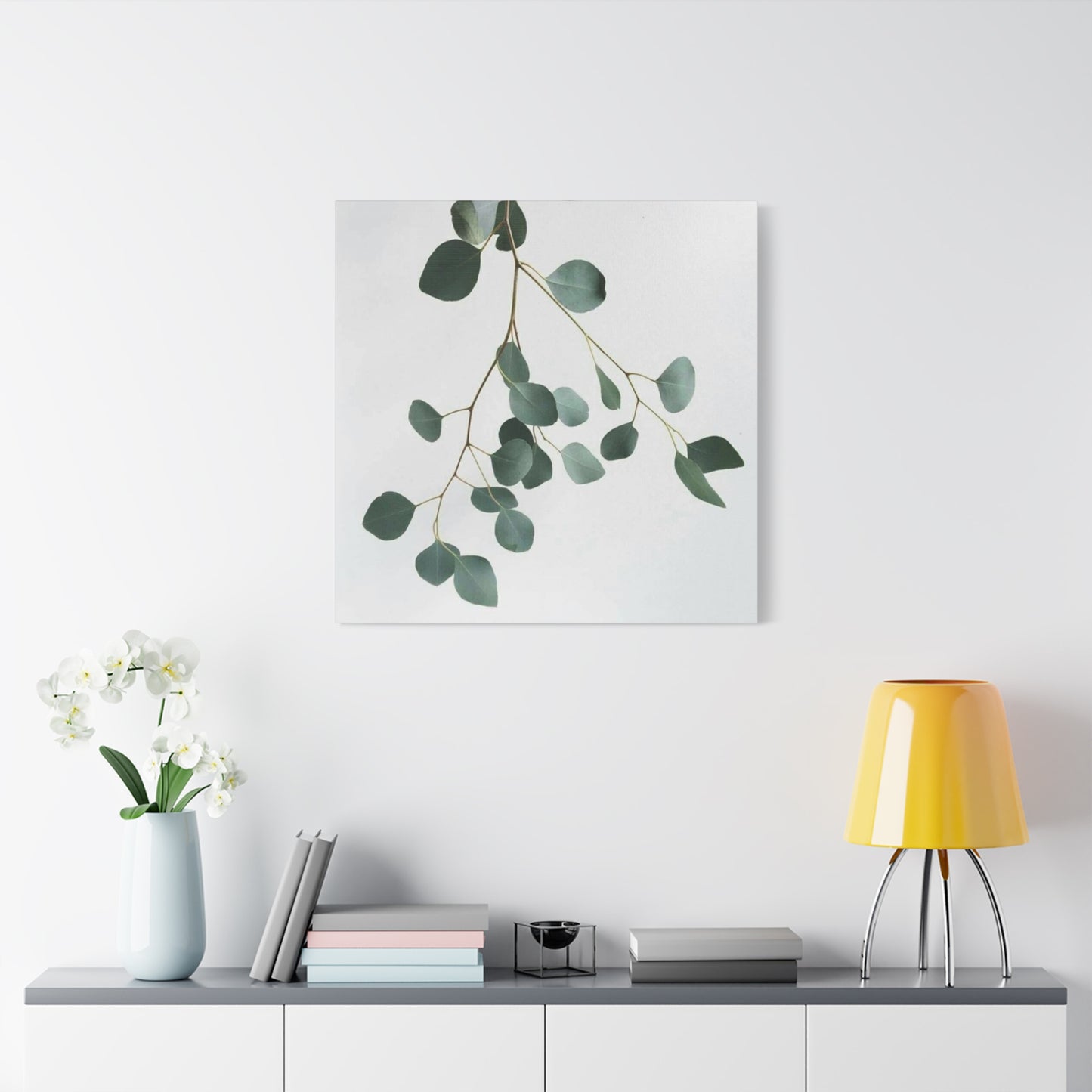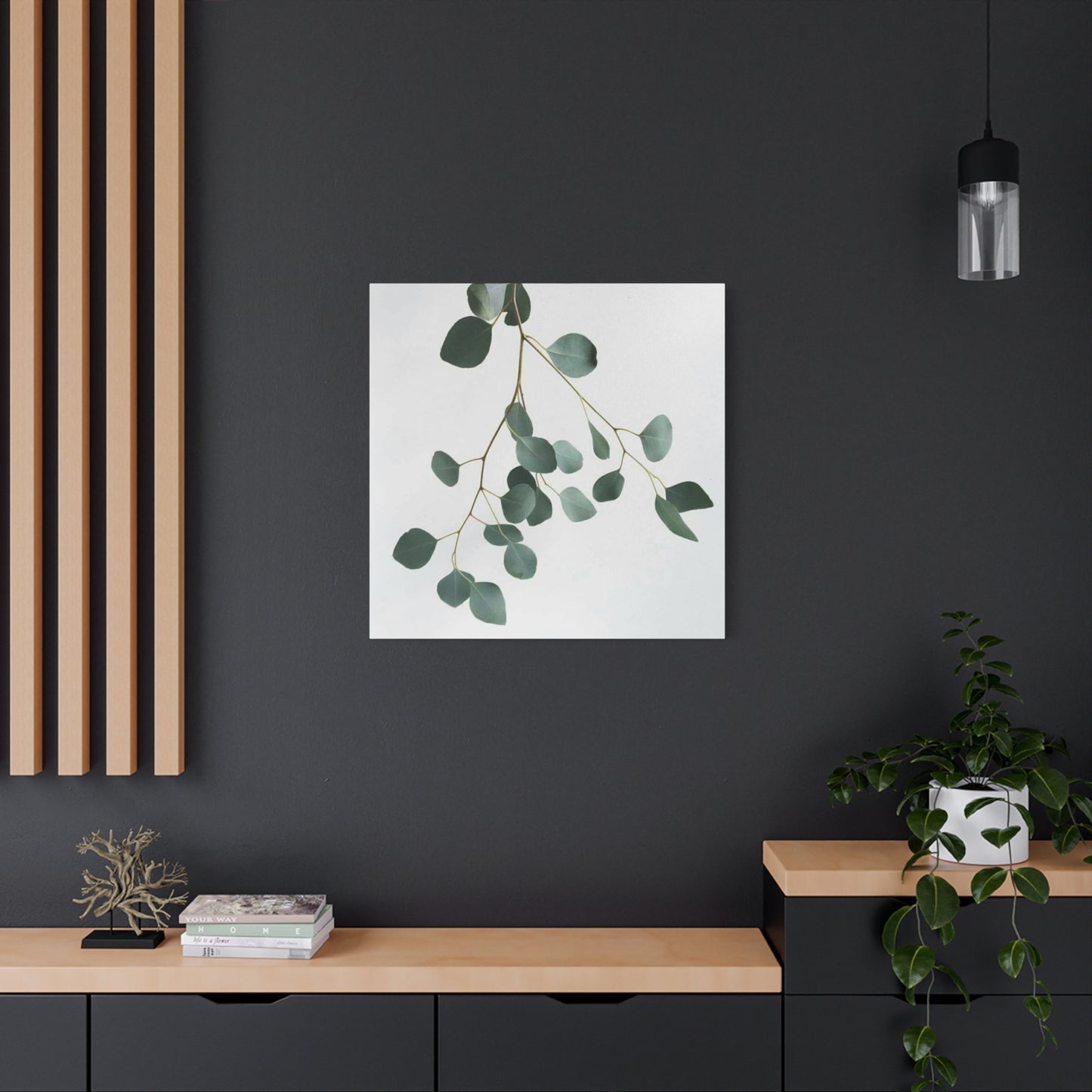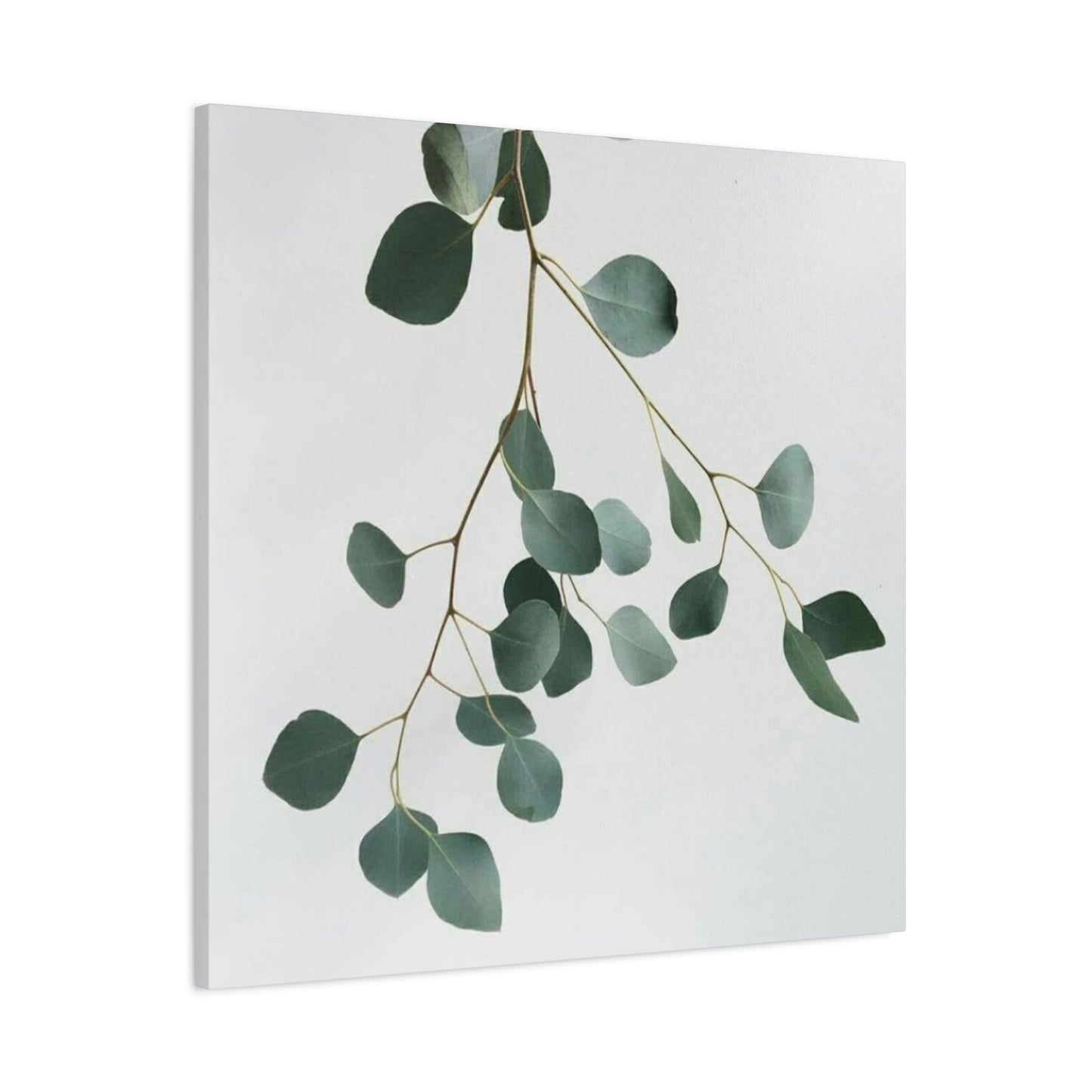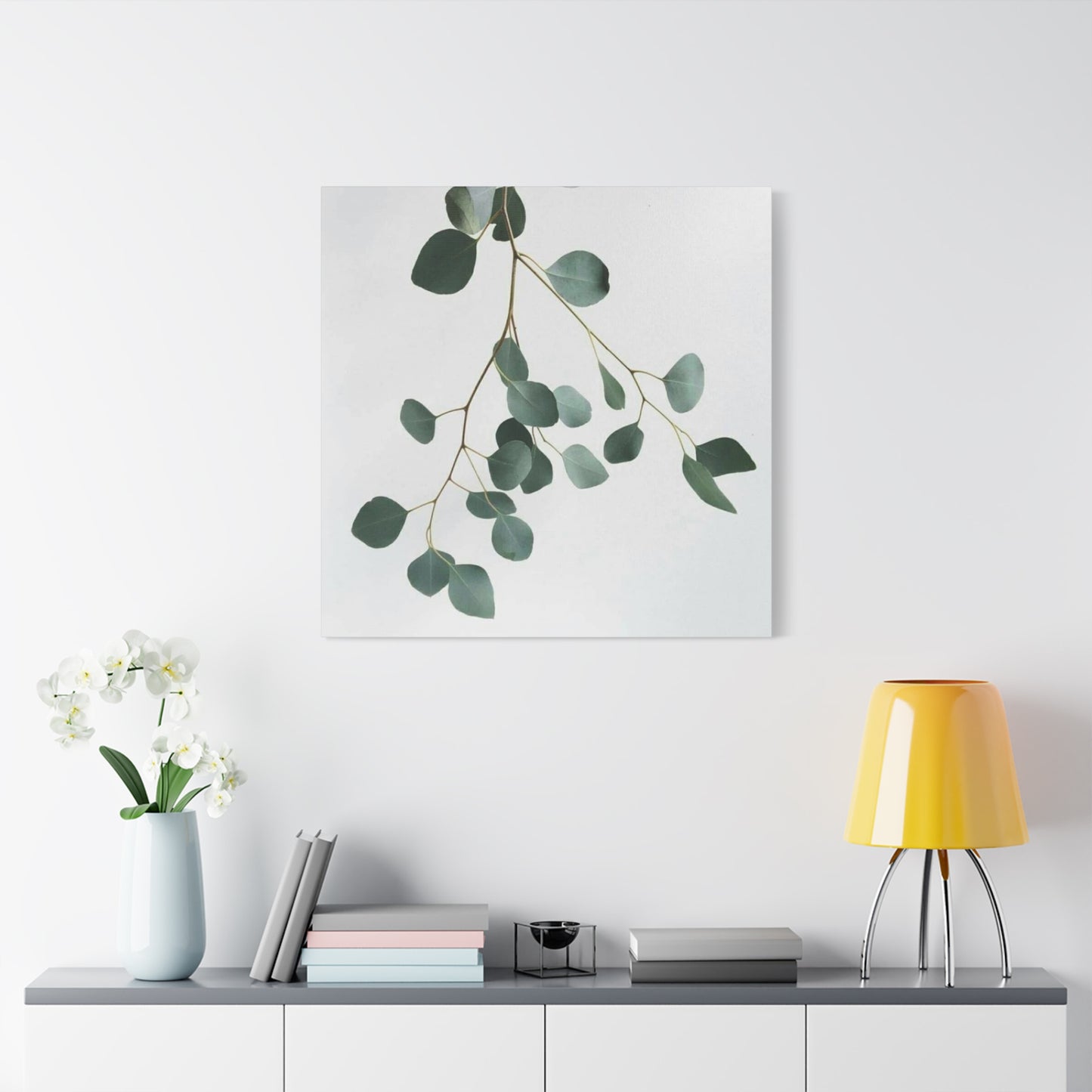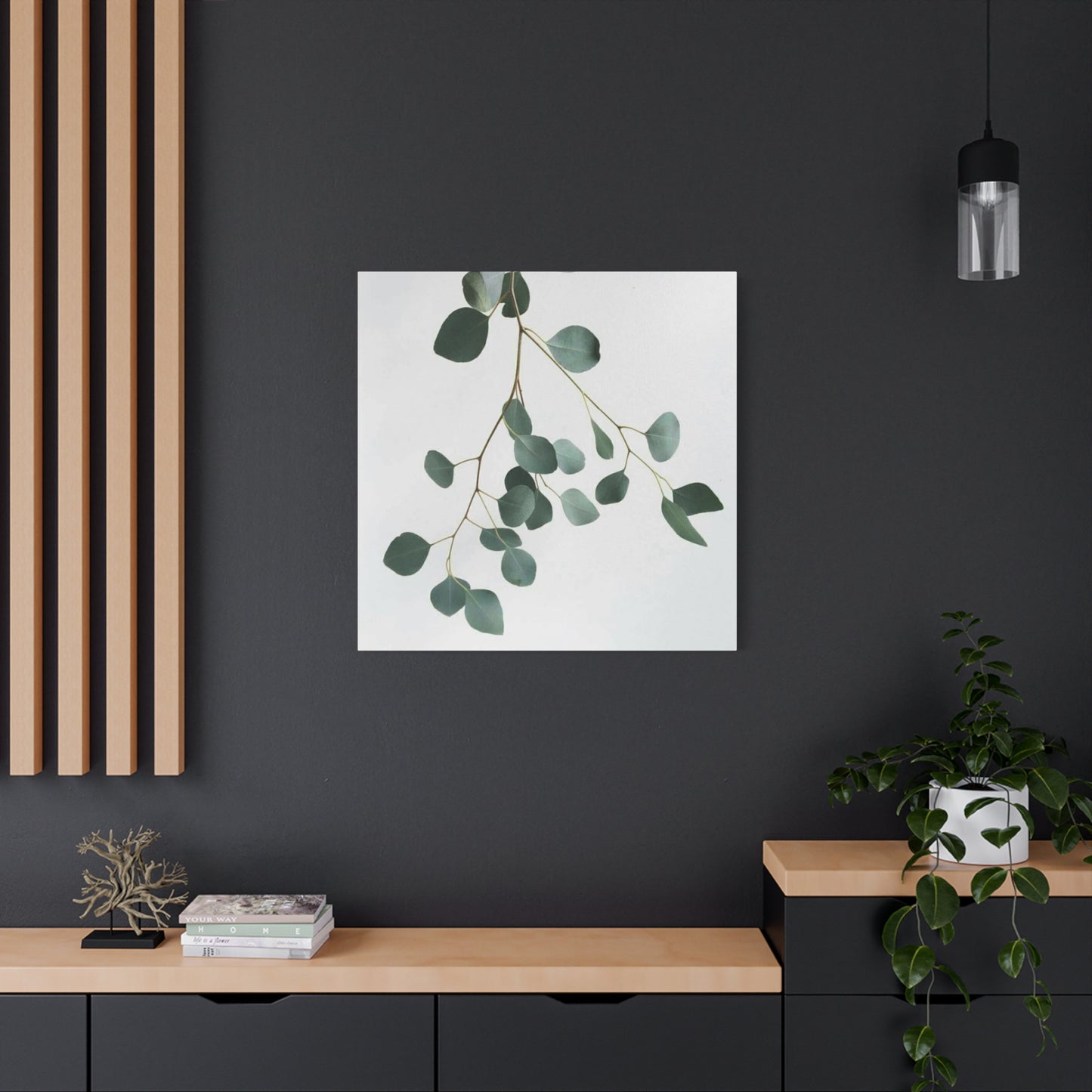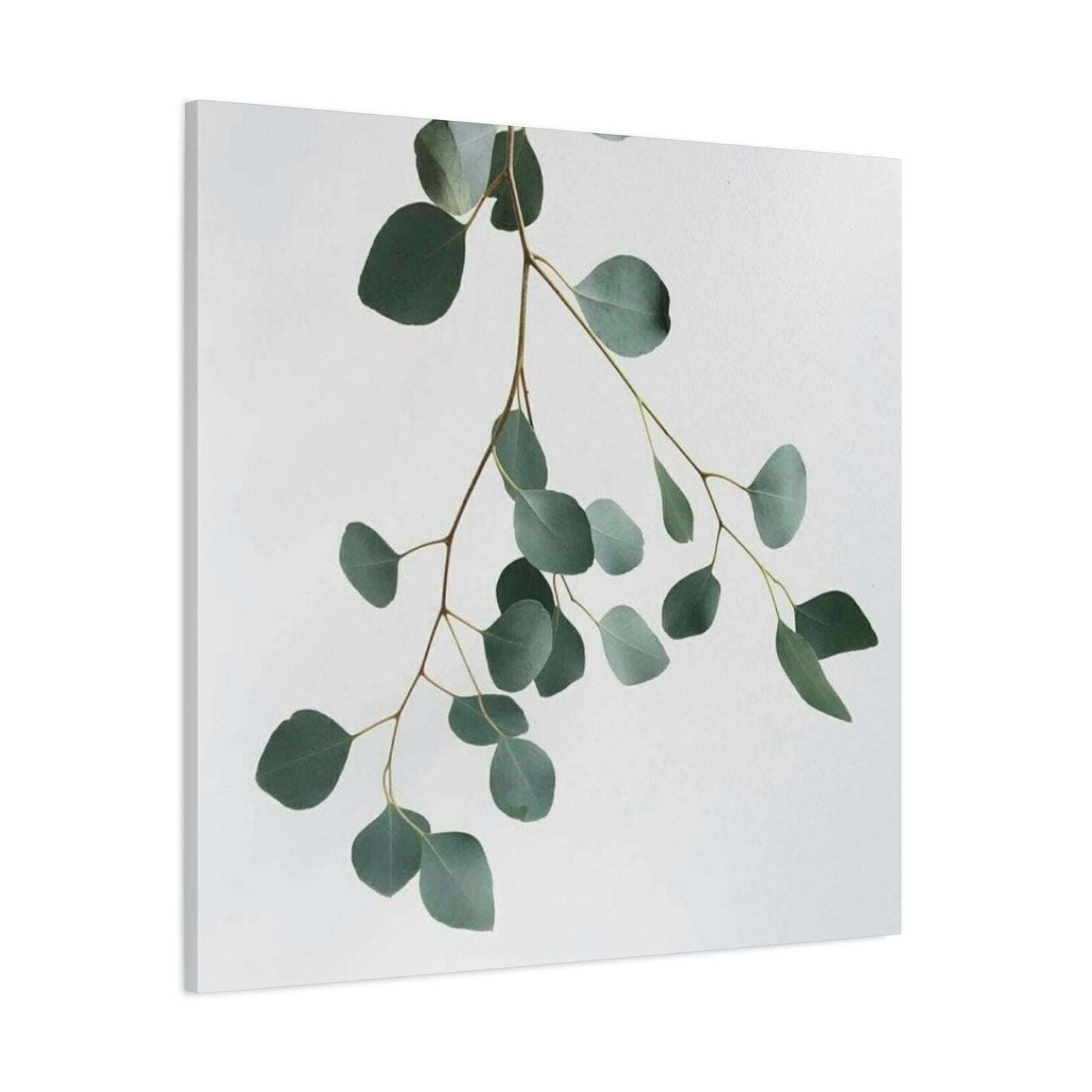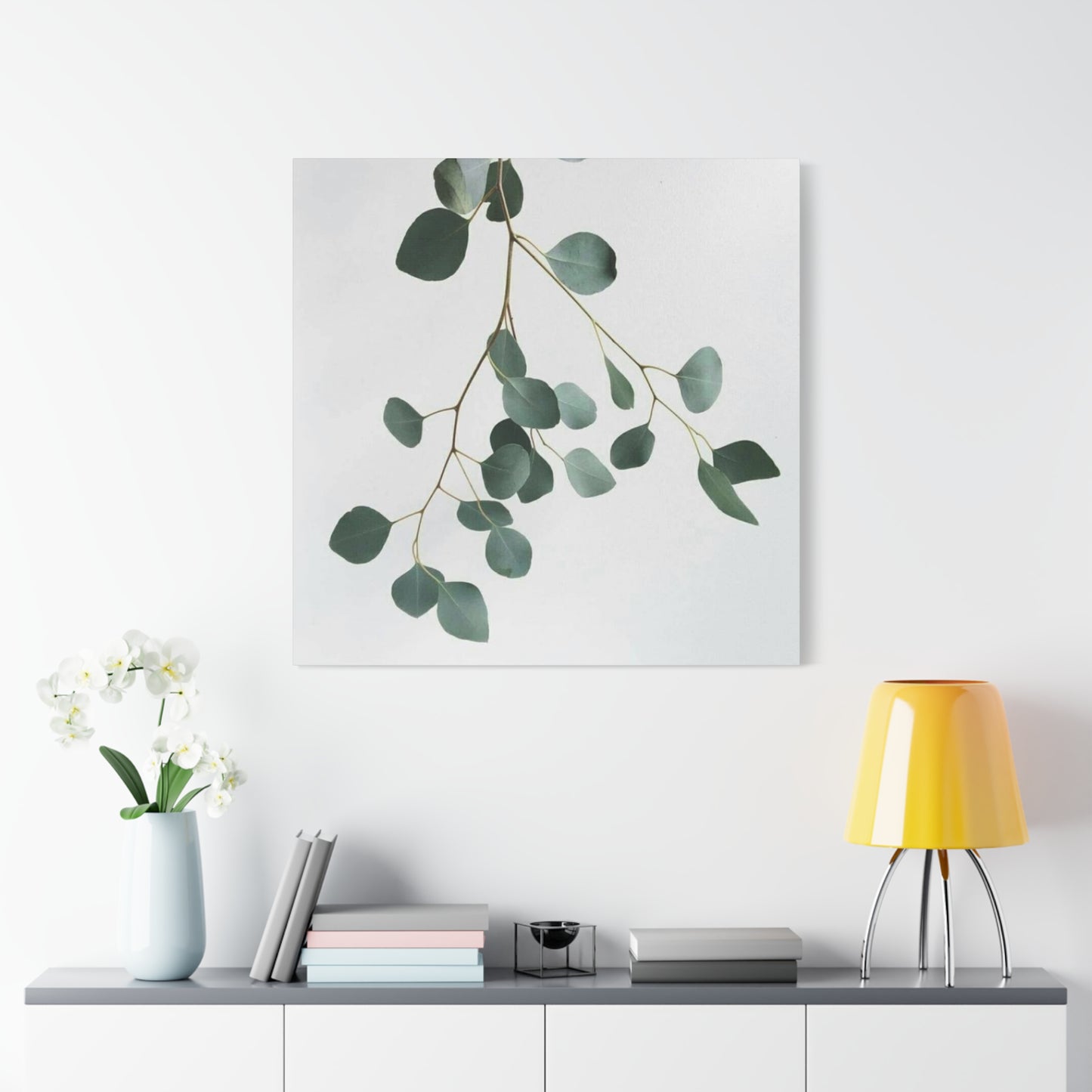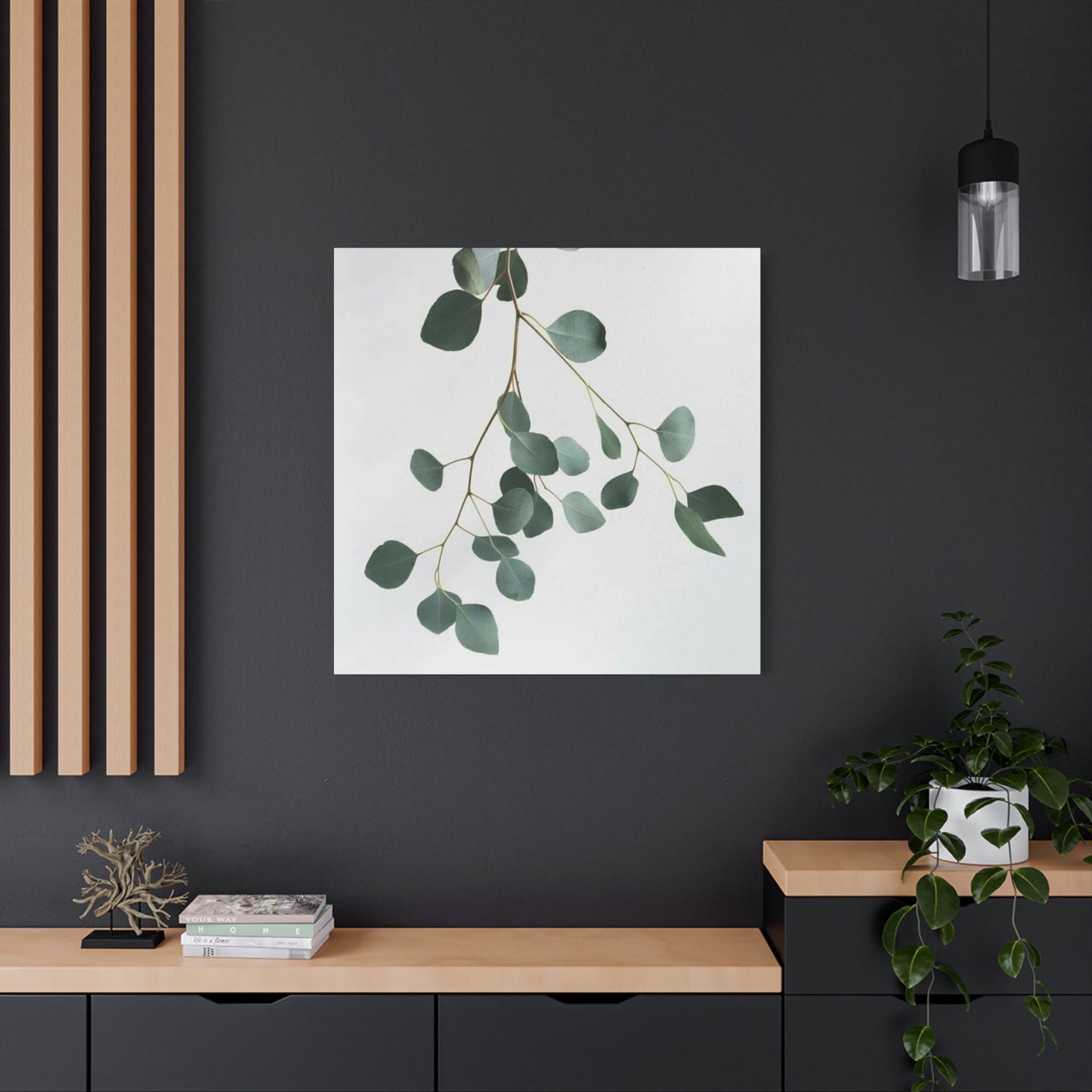Serene Botanical Charm: Transform Your Space with Eucalyptus plant Wall Art
The growing fascination with botanical artwork has transformed how we approach home decoration, with eucalyptus wall art emerging as a sophisticated choice for those seeking to bring nature's tranquility indoors. This evergreen plant, known for its distinctive silvery-green leaves and aromatic properties, has become a symbol of serenity and natural elegance in contemporary home styling.
Eucalyptus artwork offers a unique blend of modern aesthetics and timeless natural beauty, making it an ideal choice for homeowners looking to create calming environments that reflect their connection to nature. The gentle curves of eucalyptus branches, combined with their soft color palette, provide a versatile foundation for various decorative themes while maintaining a sense of organic sophistication.
The appeal of eucalyptus wall art extends beyond mere aesthetics. These botanical pieces serve as visual anchors that can transform any room into a peaceful retreat, offering viewers a moment of calm in their daily routines. Whether displayed as standalone pieces or incorporated into larger gallery walls, eucalyptus artwork brings a sense of natural harmony that complements both minimalist and elaborate decorative schemes.
Optimal Frame Selection for Eucalyptus Botanical Artwork
Selecting the appropriate frame for eucalyptus wall art requires careful consideration of both the artwork's characteristics and the surrounding environment. The frame serves as more than just a protective border; it acts as a bridge between the natural subject matter and the architectural elements of your home.
Natural wood frames complement eucalyptus artwork exceptionally well, creating a cohesive connection between the organic subject matter and the frame material. Light oak, maple, or birch frames enhance the subtle green tones found in eucalyptus leaves while providing a warm, welcoming appearance that works well in various settings. These natural wood options allow the botanical elements to remain the focal point while adding textural interest to the overall presentation.
For those preferring a more contemporary approach, sleek metal frames offer a striking contrast that can modernize eucalyptus artwork. Black or charcoal frames create dramatic boundaries that make the soft eucalyptus tones appear more vibrant, while silver or brushed aluminum options provide a clean, minimalist appearance that works particularly well in modern homes.
White and cream-colored frames offer versatility that works across multiple decorative styles. These neutral options allow eucalyptus artwork to integrate seamlessly into existing color schemes while providing a clean, gallery-like presentation. The light frame colors also help reflect natural light, potentially making smaller rooms appear more open and airy.
When considering frame width, thinner profiles generally work better with delicate eucalyptus artwork, as they avoid overwhelming the subtle botanical details. However, larger pieces may benefit from slightly wider frames that provide appropriate visual weight and presence within the room.
Matting considerations play a crucial role in the overall presentation of eucalyptus wall art. Soft white or cream mats create breathing room around the artwork while maintaining the serene aesthetic that eucalyptus pieces naturally embody. For a more dramatic effect, consider subtle gray or sage green mats that echo the natural tones found within the eucalyptus leaves themselves.
The glass or acrylic covering should provide UV protection to preserve the artwork's colors over time, particularly important for pieces displayed in rooms with significant natural light exposure. Anti-reflective coatings can enhance viewing by reducing glare and allowing the artwork's details to remain visible from various angles.
Eucalyptus Artwork in Neutral Color Schemes
Eucalyptus wall art demonstrates remarkable compatibility with neutral color palettes, serving as a perfect complement to homes decorated in soft whites, warm grays, beiges, and other understated tones. The natural green-gray coloration of eucalyptus leaves creates subtle color interest without disrupting the calm, cohesive appearance that neutral schemes aim to achieve.
In rooms dominated by white and cream tones, eucalyptus artwork provides gentle color variation that prevents the environment from feeling sterile or monotonous. The organic shapes and soft hues add visual texture while maintaining the peaceful atmosphere that neutral palettes naturally create. This makes eucalyptus pieces particularly valuable in bedrooms, bathrooms, and other relaxation-focused areas.
Gray-based neutral schemes benefit significantly from the addition of eucalyptus wall art, as the natural green undertones in eucalyptus leaves create a sophisticated color relationship with various gray shades. Cool grays pair beautifully with the silvery aspects of eucalyptus foliage, while warmer grays complement the earthier tones sometimes present in eucalyptus artwork.
Beige and taupe color schemes gain depth and interest when eucalyptus artwork is introduced. The natural green elements provide a refreshing contrast that prevents beige-dominated rooms from appearing flat or uninspiring. This combination creates environments that feel both grounded and refreshing, perfect for living areas where relaxation and comfort are priorities.
When working with neutral palettes, consider the lighting conditions of the room. Natural light enhances the subtle color variations in eucalyptus artwork, while artificial lighting may require warmer bulbs to maintain the cozy atmosphere that neutral schemes typically aim to achieve. The positioning of eucalyptus pieces should take advantage of available light to showcase the delicate details and color variations that make these botanical works so appealing.
Layering different neutral tones becomes more effective when eucalyptus artwork is present to tie the various shades together. The natural color variations found in eucalyptus leaves often include multiple neutral tones, making these pieces excellent unifying elements in rooms where several neutral shades are used throughout furniture, textiles, and other decorative elements.
Creating Botanical Layers with Eucalyptus Prints
The art of layering eucalyptus prints with other botanical artwork creates dynamic, visually interesting displays that celebrate the diversity and beauty of plant life. This approach allows homeowners to build comprehensive botanical galleries that reflect their appreciation for nature while maintaining sophisticated aesthetic appeal.
Combining eucalyptus artwork with complementary plant species creates rich, textured displays that capture the complexity of natural environments. Ferns, with their delicate fronds and detailed structures, provide an excellent contrast to the broader, simpler forms of eucalyptus leaves. The combination creates visual dialogue between different botanical textures while maintaining a cohesive natural theme.
Flowering botanical prints can be successfully integrated with eucalyptus artwork when color coordination is carefully considered. Soft pink cherry blossoms, white magnolia blooms, or pale lavender flowers complement the subtle tones of eucalyptus while adding seasonal interest and color variation. The key lies in selecting floral pieces that share similar color intensities and avoiding overly bright or saturated blooms that might clash with eucalyptus's understated palette.
Herb and medicinal plant artwork creates meaningful combinations with eucalyptus pieces, particularly given eucalyptus's own therapeutic properties. Rosemary, sage, thyme, and other aromatic plants share similar color palettes and natural associations, making them ideal companions for eucalyptus artwork. These combinations work particularly well in kitchens, bathrooms, or wellness-focused areas of the home.
When layering botanical prints, consider varying the sizes and orientations to create dynamic arrangements. Large eucalyptus pieces can serve as anchor points, with smaller botanical works arranged around them to create balanced, interesting compositions. Mixing vertical and horizontal orientations adds movement and prevents arrangements from appearing static or predictable.
The spacing between layered botanical pieces should allow each artwork to maintain its individual impact while contributing to the overall composition. Too much spacing can make arrangements feel disconnected, while insufficient spacing may cause individual pieces to compete for attention rather than working together harmoniously.
Creating seasonal rotations within layered botanical displays allows for year-round interest and prevents arrangements from becoming stagnant. Eucalyptus pieces can remain as permanent anchors while other botanical artwork is adjusted to reflect changing seasons or personal preferences.
Modern Farmhouse Styling with Eucalyptus Artwork
The modern farmhouse aesthetic has embraced eucalyptus wall art as a key element in creating homes that feel both contemporary and rooted in natural traditions. This decorative style celebrates the marriage of rustic charm and modern sensibility, making eucalyptus artwork an ideal choice for bridging these seemingly different approaches.
Eucalyptus pieces complement the clean lines and neutral colors typical of modern farmhouse design while adding the organic elements essential to this style's success. The natural subject matter aligns with farmhouse traditions of bringing the outdoors inside, while the sophisticated presentation methods meet modern expectations for polished, intentional decorating.
Shiplap walls, a hallmark of modern farmhouse design, provide an excellent backdrop for eucalyptus artwork. The horizontal lines of shiplap create visual structure that contrasts beautifully with the organic curves and natural forms found in eucalyptus pieces. White or light gray shiplap particularly enhances the subtle colors in eucalyptus artwork while maintaining the bright, airy feeling that modern farmhouse styles prioritize.
Reclaimed wood elements, another farmhouse staple, create natural partnerships with eucalyptus wall art. Whether appearing as accent walls, ceiling beams, or furniture pieces, weathered wood surfaces complement the natural themes present in eucalyptus artwork while adding textural interest that enhances the overall rustic-modern balance.
Metal accents, particularly those in black or galvanized finishes, work well alongside eucalyptus artwork in modern farmhouse settings. Light fixtures, hardware, and decorative objects in these finishes provide industrial contrast that prevents the natural elements from overwhelming the modern aspects of the design scheme.
Textile choices in modern farmhouse rooms should complement eucalyptus artwork through natural materials and neutral colors. Linen curtains, jute rugs, and cotton throws in whites, grays, and soft beiges create layered neutral palettes that allow eucalyptus pieces to add just the right amount of color interest.
The scale of eucalyptus artwork in modern farmhouse settings should reflect the generous proportions typical of this design style. Larger pieces work well in open floor plans and high-ceilinged areas, while smaller pieces can be grouped to create impactful displays that maintain appropriate visual weight within the room.
Combining Falling Eucalyptus with Abstract Elements
The graceful, cascading nature of falling eucalyptus creates unique opportunities for pairing with abstract artwork, resulting in sophisticated displays that celebrate both natural beauty and artistic interpretation. This combination approach allows homeowners to create gallery walls that are both grounded in nature and elevated through artistic expression.
Abstract pieces with color palettes that complement eucalyptus tones create harmonious relationships that feel intentional and sophisticated. Soft gray abstracts, gentle geometric pieces, or watercolor works in muted tones can enhance eucalyptus artwork without competing for visual attention. The key lies in selecting abstract pieces that share similar color intensities and emotional qualities.
Textural abstract pieces offer another avenue for successful pairing with eucalyptus artwork. Pieces featuring subtle texture variations, gentle gradients, or organic abstract forms can echo the natural textures found in eucalyptus leaves while providing contemporary contrast. These combinations work particularly well in modern homes where both natural and artistic elements are valued.
Minimalist abstract works complement the understated nature of eucalyptus artwork beautifully. Simple line drawings, subtle color field paintings, or geometric pieces with clean compositions can provide modern counterpoints to botanical works without overwhelming their natural serenity. This approach creates gallery walls that feel both contemporary and timeless.
When combining falling eucalyptus with abstract pieces, consider the visual flow between artworks. The cascading movement inherent in falling eucalyptus can be echoed or contrasted by the movement or lack thereof in abstract pieces. Creating visual relationships between the organic flow of eucalyptus and the structured elements of abstract art can result in dynamic, engaging displays.
Size relationships become particularly important when mixing eucalyptus and abstract artwork. Using eucalyptus pieces as focal points with smaller abstract works as supporting elements often creates more successful arrangements than attempting to give equal visual weight to both types of artwork. However, reversing this relationship can also be effective when the abstract pieces are particularly striking or significant.
The positioning of mixed eucalyptus and abstract displays should consider viewing angles and room traffic patterns. These sophisticated arrangements deserve placement where they can be properly appreciated, making them excellent choices for areas where people naturally pause or gather.
Symbolic Meanings of Eucalyptus in Home Environments
The symbolic significance of eucalyptus extends far beyond its visual appeal, bringing layers of meaning that enhance the emotional impact of eucalyptus wall art in residential settings. Understanding these deeper associations can help homeowners make more intentional choices about where and how to display eucalyptus artwork.
Eucalyptus has long been associated with healing and purification across various cultures. In home environments, eucalyptus wall art can serve as subtle reminders of health and wellness goals, making these pieces particularly appropriate for bedrooms, bathrooms, or meditation areas. The presence of eucalyptus imagery may contribute to creating atmospheres that support relaxation and mental clarity.
The plant's ability to thrive in diverse conditions has made it a symbol of adaptability and resilience. Displaying eucalyptus artwork in homes can serve as daily inspiration for navigating life's challenges with grace and flexibility. This symbolism makes eucalyptus pieces meaningful additions to home offices or study areas where perseverance and adaptability are valued.
Protection and renewal are additional symbolic associations with eucalyptus that translate well to residential applications. The cyclical nature of eucalyptus growth, with its ability to regenerate after fire or cutting, represents renewal and fresh beginnings. This symbolism can make eucalyptus wall art particularly meaningful during times of change or transition in homeowners' lives.
The cleansing properties traditionally attributed to eucalyptus extend to its symbolic use in creating fresh starts and clearing negative energy. While these concepts may be more metaphorical than literal, the psychological impact of surrounding oneself with symbols of purification and clarity can contribute to positive mental states and intentional living.
Cultural associations with eucalyptus vary globally but often center around themes of peace, tranquility, and connection to nature. In Australian Aboriginal cultures, eucalyptus holds sacred significance, representing the connection between earth and sky. While respecting these cultural origins, homeowners can appreciate the universal themes of natural connection that eucalyptus represents.
The aromatherapy associations of eucalyptus, while not directly applicable to artwork, can influence how viewers respond to eucalyptus wall art. Many people have positive associations with eucalyptus scent from spa treatments or wellness practices, potentially enhancing their emotional response to eucalyptus imagery in their homes.
Creating Dynamic Movement with Falling Leaf Designs
The inherent movement captured in falling eucalyptus leaf artwork brings dynamic energy to otherwise static wall displays. This sense of motion creates visual interest that can transform entire rooms, making falling eucalyptus pieces particularly valuable for areas that benefit from energetic enhancement.
Falling eucalyptus designs capture nature's graceful movement in permanent form, allowing viewers to experience the peaceful motion of floating leaves without the impermanence of actual falling foliage. This frozen motion creates a sense of ongoing natural activity that can make rooms feel more alive and connected to outdoor environments.
The directional flow in falling eucalyptus artwork can be used strategically to guide attention and movement within rooms. Pieces depicting leaves falling from upper left to lower right, for example, can create visual pathways that lead the eye toward specific architectural features or other decorative elements. This makes falling eucalyptus artwork useful for enhancing room flow and spatial relationships.
Clustered arrangements of falling eucalyptus pieces can create the impression of wind patterns or natural dispersal, adding environmental storytelling to wall displays. Multiple pieces with coordinated but varied falling patterns can suggest breeze movement, seasonal change, or the natural randomness found in outdoor settings.
The scale of falling elements within eucalyptus artwork affects the perceived intensity of movement. Larger falling leaves suggest gentler, more dramatic motion, while smaller, more numerous falling elements can create impressions of active breezes or seasonal leaf drop. Choosing artwork with movement scales appropriate to the desired room energy helps achieve intended atmospheric effects.
Lighting plays a crucial role in enhancing the movement quality of falling eucalyptus artwork. Side lighting can create shadows that emphasize the three-dimensional quality of falling leaves, while backlighting can create silhouette effects that enhance the sense of motion. Natural light changes throughout the day can make falling eucalyptus pieces appear to shift and change, adding temporal dimension to their movement qualities.
The positioning of falling eucalyptus artwork within rooms should consider how the depicted movement relates to actual room traffic and energy patterns. Placing pieces with upward-moving elements in areas where people enter or gather can create welcoming energy, while downward-moving pieces might be more appropriate in relaxation areas where calming energy is desired.
Eucalyptus Artwork for Entry Areas and Corridors
Entryways and hallways present unique opportunities for eucalyptus wall art to make powerful first impressions while creating seamless transitions between different areas of the home. These transitional locations benefit from artwork that provides visual interest without overwhelming the typically narrower confines of entry areas and corridors.
The calming qualities of eucalyptus artwork make it an excellent choice for entryways, where the goal is often to create welcoming atmospheres that help visitors and residents transition from outside energy to the more intimate environment of the home. The natural subject matter immediately communicates an appreciation for organic beauty and peaceful living.
Hallway displays of eucalyptus artwork can create gallery-like experiences that transform potentially mundane transitional areas into engaging passages. The linear nature of hallways provides opportunities for creating flowing sequences of eucalyptus pieces that can guide movement while providing visual entertainment for those moving through the area.
Scale considerations become particularly important in entry areas and corridors, where ceiling heights and wall widths may be limited. Eucalyptus artwork in these areas should be appropriately sized to avoid overwhelming narrow confines while maintaining sufficient presence to create impact. Multiple smaller pieces often work better than single large pieces in these applications.
Lighting in entry areas and hallways can significantly impact how eucalyptus artwork is perceived and appreciated. These areas often have limited natural light, making artificial lighting choices crucial for proper artwork display. Track lighting, picture lights, or strategically placed accent lighting can ensure eucalyptus pieces are properly illuminated and welcoming.
The durability of eucalyptus artwork becomes a consideration in high-traffic entry areas and corridors. Proper framing with protective glass or acrylic covering helps preserve artwork in areas where it may be exposed to more handling, touching, or environmental changes from doors opening and closing.
Storage and furniture integration in entry areas should complement eucalyptus wall art without competing for attention. Console tables, coat racks, or storage benches in natural materials or neutral colors can enhance the organic themes present in eucalyptus artwork while providing necessary functionality.
Year-Round Appeal of Soft Botanical Artwork
The enduring appeal of eucalyptus wall art lies in its ability to remain relevant and attractive throughout all seasons, making it an excellent investment for homeowners seeking artwork that won't require seasonal rotation or updating. This year-round versatility stems from the timeless quality of botanical subjects and the neutral color palettes typical of eucalyptus artwork.
Spring freshness is naturally embodied in eucalyptus artwork through its green tones and organic forms, making these pieces feel perfectly aligned with the renewal and growth associated with springtime. The soft colors complement the fresh energy of spring decorating while providing subtle natural elements that enhance seasonal flower arrangements and lighter textiles.
Summer compatibility comes through eucalyptus artwork's ability to provide cooling visual effects without requiring actual climate control. The silvery-green tones and organic forms can make rooms feel fresher and more connected to outdoor summer environments, while the neutral colors work well with the lighter fabrics and brighter lighting typical of summer decorating.
Autumn relevance emerges through eucalyptus's connection to harvest themes and natural preservation. While eucalyptus doesn't display the dramatic color changes of deciduous plants, its evergreen nature can represent the enduring aspects of nature that persist through seasonal transitions. The muted colors also complement the warmer, earthier tones often preferred in autumn decorating.
Winter warmth can be enhanced by eucalyptus artwork's ability to maintain natural connections during seasons when outdoor plant life may be dormant or less visible. The organic forms and soft colors can provide psychological warmth and connection to growing things during months when such connections might be more limited in actual outdoor environments.
The neutral nature of eucalyptus colors allows for easy integration with seasonal decorative changes without requiring artwork rotation. Holiday decorations, seasonal textiles, and changing color preferences can all be accommodated while eucalyptus artwork continues to provide appropriate and appealing wall coverage.
Maintenance requirements for eucalyptus wall art remain consistent throughout the year, unlike seasonal decorations that may require storage, replacement, or updating. This makes eucalyptus pieces particularly valuable for busy homeowners who prefer decorating approaches that provide long-term satisfaction without ongoing maintenance demands.
Autumn-Themed Eucalyptus Arrangements
While eucalyptus maintains its appeal year-round, autumn presents particularly rich opportunities for incorporating eucalyptus wall art into seasonal decorating schemes. The natural color palette of eucalyptus artwork complements traditional autumn colors while providing evergreen stability that can anchor more dramatic seasonal elements.
Harvest themes naturally align with eucalyptus artwork, as the plant's association with natural abundance and preservation makes it appropriate for autumn celebrations of seasonal plenty. Eucalyptus pieces can serve as sophisticated backdrops for seasonal displays of pumpkins, gourds, and other harvest elements without competing with these more colorful seasonal features.
The muted green-gray tones of eucalyptus artwork provide excellent contrast for traditional autumn colors like deep oranges, rich reds, and golden yellows. This contrast creates visual interest while preventing autumn displays from becoming monotonously warm-toned. The eucalyptus elements can serve as cooling visual breaks that make autumn colors appear more vibrant and intentional.
Layering eucalyptus artwork with autumn-specific botanical pieces creates sophisticated seasonal displays that celebrate the full spectrum of autumn plant life. Combining eucalyptus with artwork featuring oak leaves, maple branches, or other deciduous plants creates comprehensive botanical galleries that capture autumn's natural diversity.
Textural combinations become particularly effective in autumn, when the smooth, silvery qualities of eucalyptus can contrast beautifully with the more textured, weathered appearance of autumn leaves and branches. This textural interplay adds depth and interest to seasonal displays while maintaining the sophisticated aesthetic that eucalyptus artwork naturally provides.
Lighting considerations for autumn eucalyptus displays should account for the shorter days and different quality of natural light typical of the season. Warmer artificial lighting can enhance the cozy atmosphere often desired in autumn decorating while ensuring eucalyptus artwork remains properly illuminated and appreciated.
Seasonal fragrance associations can enhance the impact of eucalyptus wall art during autumn months. While the artwork itself doesn't provide scent, combining eucalyptus visuals with actual eucalyptus elements in seasonal arrangements can create multi-sensory experiences that celebrate the plant's aromatic qualities alongside its visual appeal.
Displaying Eucalyptus Art in Compact Areas
Small living areas present unique challenges and opportunities for displaying eucalyptus wall art effectively. The key lies in maximizing visual impact while respecting spatial limitations and ensuring that artwork enhances rather than overwhelms compact environments.
Vertical arrangements work particularly well in small areas where floor and surface areas are limited but wall height remains available. Tall, narrow eucalyptus pieces or vertically arranged groups of smaller pieces can draw the eye upward, creating the illusion of greater height while providing sophisticated wall coverage that doesn't compete with limited floor area.
Light colors in eucalyptus artwork can help small areas appear larger and more open. Pieces with predominantly white backgrounds or very light gray tones reflect available light more effectively than darker pieces, contributing to the bright, airy feeling that makes small areas feel more spacious and comfortable.
Multi-functional display approaches allow eucalyptus artwork to serve double duty in compact areas. Pieces positioned above functional furniture like desks, dressers, or dining tables can provide visual interest while contributing to the overall functionality of small living situations. This integration makes every element count in areas where space efficiency is crucial.
Corner installations of eucalyptus artwork can transform often-underutilized areas into attractive focal points. Corner-mounted pieces or arrangements that span corner walls can add visual interest to areas that might otherwise feel empty or wasted, making small areas feel more completely developed and intentionally decorated.
Scale relationships become even more critical in small areas, where oversized artwork can overwhelm the environment while undersized pieces may appear insignificant. Eucalyptus artwork should be appropriately scaled to complement rather than compete with the room's proportions, creating balance that makes small areas feel well-designed rather than cramped.
Minimalist approaches often work best in compact areas, where too many decorative elements can create visual clutter that makes areas feel even smaller. Single, well-chosen eucalyptus pieces or small, carefully curated groupings often provide more satisfying results than complex gallery walls that might work better in larger environments.
Eucalyptus Canvas Art for Private Retreats
Bedrooms and bathrooms represent intimate areas where the calming qualities of eucalyptus wall art can have maximum impact on daily life and personal well-being. These private locations allow for more personal decorative choices while benefiting from the peaceful, restorative qualities that eucalyptus artwork naturally provides.
Bedroom applications of eucalyptus canvas art should emphasize the calming, sleep-promoting qualities that make botanical artwork particularly appropriate for rest areas. The soft colors and organic forms can contribute to creating bedrooms that feel like peaceful retreats from daily stress, supporting better sleep quality and morning tranquility.
Positioning eucalyptus artwork in bedrooms requires consideration of viewing angles from the bed, seating areas, and dressing locations. Pieces should be positioned where they can be easily appreciated during both active use and quiet moments, contributing to the room's restful atmosphere without creating visual distraction that might interfere with sleep.
Bathroom installations of eucalyptus artwork can transform utilitarian environments into spa-like retreats that support daily wellness routines. The association of eucalyptus with cleansing and purification makes it particularly appropriate for bathroom environments, where the imagery can reinforce the space's function while adding sophisticated decorative elements.
Moisture considerations in bathroom installations require appropriate protective measures for eucalyptus artwork. Proper sealing, protective glass, and adequate ventilation help preserve artwork in environments with higher humidity levels, ensuring that eucalyptus pieces maintain their beauty and impact over time.
Size and scale in private retreat areas can be more intimate than in public areas of the home. Smaller, more detailed eucalyptus pieces that reward close viewing can be particularly effective in bedrooms and bathrooms, where viewers have opportunities for contemplative appreciation that might not be available in busier areas of the home.
Personal meaning takes on greater significance in private areas, where eucalyptus artwork can serve as daily reminders of personal values, wellness goals, or connections to nature. The symbolic associations of eucalyptus with healing, renewal, and purification can provide meaningful daily inspiration in areas where personal care and restoration take place.
Natural Wellness Trends and Eucalyptus Imagery
The contemporary wellness movement has embraced eucalyptus as both a practical element and symbolic representation of natural health approaches. This cultural trend has significantly enhanced the appeal of eucalyptus wall art, making it a meaningful choice for homeowners interested in creating environments that support holistic well-being.
Aromatherapy associations with eucalyptus have created positive mental connections that extend to visual representations of the plant. Even though eucalyptus artwork doesn't provide actual aromatic benefits, many viewers have pleasant associations with eucalyptus scent from spa treatments, essential oil use, or wellness practices, making eucalyptus wall art psychologically comforting and health-promoting.
Biophilic design principles, which emphasize human connections to nature, have elevated botanical artwork to therapeutic status. Eucalyptus wall art serves as an accessible way to incorporate biophilic elements into homes, potentially providing stress reduction, improved mood, and enhanced overall well-being through visual connection to natural forms and colors.
Mindfulness practices often emphasize connection to nature as a pathway to mental clarity and emotional balance. Eucalyptus artwork can serve as focal points for meditation or contemplation, providing natural imagery that supports mindfulness exercises and daily reflection practices. The gentle, flowing forms of eucalyptus can be particularly effective for visual meditation techniques.
Stress reduction benefits attributed to natural imagery extend to eucalyptus wall art, which can provide calming visual elements that help counteract the stress-inducing effects of busy, technology-heavy modern environments. The soft colors and organic forms offer visual respite that may contribute to lower stress levels and improved mental health.
Sleep quality enhancement represents another area where eucalyptus wall art may provide wellness benefits. The calming visual qualities of eucalyptus imagery, combined with positive associations many people have with the plant's relaxing properties, can contribute to creating bedroom environments that support better rest and recovery.
Natural healing traditions from various cultures have long recognized eucalyptus for its therapeutic properties. While eucalyptus artwork doesn't provide direct physical benefits, it can serve as a visual reminder of natural healing approaches and may support wellness-focused lifestyle choices through its symbolic presence in the home environment.
Harmonizing Eucalyptus Art with Natural Wood Elements
The natural affinity between eucalyptus imagery and wood elements creates opportunities for sophisticated decorative combinations that celebrate the beauty and diversity of natural materials. This harmony stems from both materials' organic origins and their shared color palettes that naturally complement each other.
Wood furniture pieces provide excellent foundations for eucalyptus wall art displays, creating cohesive natural themes that feel intentional and sophisticated. Light woods like maple, birch, or pine complement the silvery-green tones of eucalyptus artwork, while darker woods like walnut or cherry can provide dramatic contrast that makes eucalyptus colors appear more vibrant and prominent.
Reclaimed wood elements, popular in contemporary decorating, create particularly effective partnerships with eucalyptus artwork. The weathered textures and varied tones found in reclaimed wood echo the natural aging and variation visible in eucalyptus leaves, creating displays that celebrate the full spectrum of natural beauty from fresh growth to aged patination.
Wood paneling or accent walls can serve as dramatic backdrops for eucalyptus artwork, creating feature walls that combine multiple natural elements into cohesive focal points. The horizontal lines of wood paneling can provide structural contrast to the organic curves of eucalyptus branches and leaves, creating visual tension that makes both elements more interesting and dynamic.
Rustic wood elements, including exposed beams, barn wood, or distressed finishes, can enhance the organic qualities present in eucalyptus artwork while adding textural interest that prevents displays from appearing too polished or formal. This combination works particularly well in casual, comfortable decorating schemes that emphasize natural beauty over formal elegance.
Modern wood elements, characterized by clean lines and smooth finishes, can provide contemporary context for eucalyptus artwork that bridges traditional botanical subjects with current design sensibilities. This combination creates sophisticated displays that feel both timeless and current, appealing to homeowners who appreciate classic natural beauty presented in contemporary formats.
Wood frame choices become particularly important when combining eucalyptus artwork with other wood elements in the room. Coordinating wood tones and finishes helps create cohesive displays, while contrasting wood choices can add visual interest and prevent rooms from appearing monotonous in their natural material selections.
Sourcing Quality Eucalyptus Wall Art Online
The digital marketplace offers unprecedented access to eucalyptus wall art from artists and retailers worldwide, but navigating online options requires knowledge of quality indicators, reliable sources, and purchasing considerations that ensure satisfactory results.
Print quality assessment begins with understanding the printing methods and materials used for eucalyptus artwork reproduction. Giclée printing on archival papers or canvas typically provides the highest quality results, with accurate color reproduction and longevity that justifies higher prices. Understanding these technical aspects helps buyers make informed decisions about print quality and expected lifespan.
Artist credentials and reputation research becomes crucial when purchasing original eucalyptus artwork or limited edition prints online. Established artists with documented exhibition histories, professional credentials, or strong customer review records typically provide more reliable quality and service than unknown sources with limited track records.
Resolution and sizing information should be carefully evaluated when purchasing digital downloads or custom-sized prints of eucalyptus artwork. High-resolution files ensure quality results when printed at various sizes, while understanding the relationship between file resolution and print size helps avoid disappointing results from inadequate source materials.
Return and exchange policies vary significantly among online eucalyptus art retailers, making it important to understand purchasing terms before committing to purchases. Reputable sellers typically offer satisfaction guarantees or return policies that protect buyers from quality issues or misrepresented products, while questionable sources may offer limited recourse for unsatisfactory purchases.
Shipping and packaging considerations affect both the cost and condition of eucalyptus wall art received through online purchases. Professional packaging with appropriate protection ensures artwork arrives undamaged, while understanding shipping timeframes helps plan installations and room completion schedules appropriately.
Customer review analysis provides valuable insights into seller reliability, product quality, and service standards that may not be apparent from product descriptions alone. Reading detailed reviews from previous customers helps identify potential issues and sets appropriate expectations for online eucalyptus art purchases.
Customization options available through online sources can provide unique opportunities for creating personalized eucalyptus artwork that perfectly fits specific decorative needs. Many digital artists and print services offer custom sizing, color adjustments, or personalization options that allow buyers to create truly unique pieces for their homes.
Conclusion
Eucalyptus wall art offers a refreshing blend of simplicity, serenity, and natural beauty that can effortlessly elevate any living environment. With its soft green tones, organic forms, and minimalist aesthetic, eucalyptus-themed artwork brings a sense of calm and botanical elegance to your space. Whether featured in a single large canvas or arranged in a curated gallery wall, this style of art reflects a deep appreciation for nature’s quiet grace and understated sophistication.
The appeal of eucalyptus wall art lies in its versatility and timeless charm. Its delicate leaves and gentle color palette make it an ideal choice for a wide range of interior styles, from modern and Scandinavian to farmhouse and bohemian. Artists often render eucalyptus branches in watercolor, line drawing, or photographic prints, offering various interpretations that cater to both classic and contemporary tastes. These pieces invite a visual breath of fresh air into any room they inhabit.
Design-wise, eucalyptus art is particularly effective in spaces where tranquility and clarity are valued—such as bedrooms, living rooms, home offices, or meditation areas. The soothing hues of sage, olive, and muted green promote a peaceful ambiance, while the botanical subject matter connects your indoor space with the restorative power of nature. Paired with natural textures like wood, linen, or ceramic, eucalyptus prints can create a cohesive and grounding aesthetic.
Beyond visual beauty, eucalyptus wall art also evokes wellness and mindfulness. Known for its calming and healing associations in nature and aromatherapy, eucalyptus imagery can inspire relaxation, focus, and emotional balance—qualities that are especially valuable in our fast-paced world.
In conclusion, eucalyptus wall art is a subtle yet impactful way to infuse your home with serene botanical elegance. Its clean lines, natural colors, and calming energy make it a timeless choice for those seeking a harmonious and refreshing interior. Whether used as a soft accent or a central design feature, eucalyptus prints enhance both the aesthetic and emotional quality of your space.

















